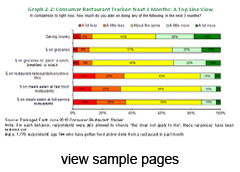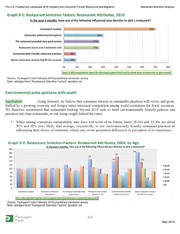|
By providing insight on the dinnergoer’s decision-making process, this report provides direction on how and why the consumer decides on a specific restaurant from which to obtain dinner, and how and why that consumer decides what to order from the menu. Selection factors are analyzed according to the following categories:
Research Features:
Coverage extends to fast food/QSR, coffeehouse, smoothie shop, ice cream shop, family restaurant, casual restaurant, and fine dining restaurant segments; as well as prepared foods segments at convenience stores/gas stations and grocery stores/supermarkets. |
||
Dinner Trends in the U.S. Foodservice Market is part of Packaged Facts' new Foodservice Market Insights collection. Additional titles include:
The insights you need, all in one collective series from Packaged Facts. Download our Foodservice Market Insights brochure and get the full details on data methodology, foodservice consumer perspective and analysis, and more. |
Packaged Facts, a division of MarketResearch.com, publishes market intelligence on a range of consumer market topics, including consumer goods and retailing, foods and beverages, demographics, pet products and services, and financial products. Packaged Facts also offers a full range of custom research services. To learn more, visit www.packagedfacts.com.


